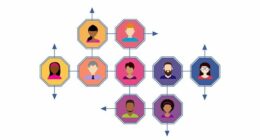Control involves managing or directing something, whereas manipulate involves skillfully influencing or exploiting something or someone for personal gain.
When it comes to experimental research, understanding the difference between control and manipulate is essential. These terms refer to distinct aspects of the scientific process that are crucial in determining causal relationships between variables. Let’s explore the differences between control and manipulate to better grasp their significance in experimental design.
Key Takeaways:
- Experimental research involves manipulating the independent variable and controlling for extraneous variables.
- Manipulation refers to systematically changing the level of the independent variable to create different conditions for comparison.
- Control involves minimizing the variability of extraneous variables by holding them constant or accounting for their effects.
- Internal validity is crucial in experimental research, and it is achieved through effective manipulation and control.
- The distinction between control and manipulate allows researchers to make meaningful conclusions about causal relationships.
What Is an Experiment?
An experiment is a study conducted to determine whether there is a causal relationship between two variables. Researchers manipulate the independent variable by systematically changing its levels, creating different conditions. These conditions are used to test the effect of the independent variable on the dependent variable. It is important to note that experiments rely on control of extraneous variables to ensure the validity of the results.
Examples of experiments include:
- Studying the impact of different treatments on patient outcomes
- Investigating the effect of various instructional methods on student learning
Experiments play a crucial role in establishing causal relationships between variables. By carefully manipulating the independent variable and controlling for extraneous variables, researchers can draw meaningful conclusions about the effects of the variables being studied.
Manipulation of the Independent Variable

In experimental research, manipulating the independent variable means changing it in different ways to see how it affects the dependent variable. This helps researchers understand the cause-and-effect relationship between the variables. For example, in a study on writing’s impact on health, participants might be asked to write about either tough experiences or neutral ones to see how it affects their health.
By changing the independent variable and comparing the results, researchers can figure out how different levels of the independent variable influence the dependent variable. This process helps researchers draw conclusions about what causes certain outcomes and understand how variables are related in experiments.
Control of Extraneous Variables

Researchers not only change the independent variable but also pay attention to controlling extraneous variables to make sure their experiments are reliable and accurate. Extraneous variables are any factors other than the ones being studied that could affect the results. By keeping these variables consistent or randomizing them, researchers can be more confident that any changes they see are because of the independent variable.
One way to control extraneous variables is by keeping them the same for all participants. For example, if researchers are studying a new medicine’s effect on blood pressure, they might only choose middle-aged people with no other health issues to make sure other factors don’t interfere. Another method is randomization, where participants are randomly put into different groups. This helps make sure that any differences seen between groups are because of the independent variable, not other factors. These steps help researchers make sure their experiments are accurate and that they can trust the results they find.
| Control Measures | Description |
|---|---|
| Holding Variables Constant | Maintaining a consistent level or condition for each extraneous variable throughout the experiment. |
| Randomization | Randomly assigning participants to different conditions or treatments to distribute the effects of extraneous variables evenly. |
| Matching | Pairing participants based on specific characteristics to control for the influence of extraneous variables. |
| Statistical Control | Using statistical techniques to adjust for the effects of extraneous variables on the dependent variable. |
Internal Validity
When scientists run experiments, they want to make sure their findings are trustworthy, so they focus on something called internal validity. This means they want to be confident that any changes they see in the outcome are because of what they’re testing and not because of other factors. To do this, they carefully control everything in the experiment, especially the thing they’re testing (called the independent variable) and anything else that could mess up the results (called extraneous variables).
By changing only one thing at a time and making sure everything else stays the same, researchers can say for sure whether the thing they’re testing really causes the changes they observe. For example, if they’re testing a new teaching method, they might try it with one group of students and compare their results to another group using the old method. By keeping everything else equal, like the students’ backgrounds and the classroom environment, they can be more confident that any differences they see in how the students do are because of the teaching method they’re testing. This way, scientists can trust that their experiments show what they’re supposed to.
External Validity
External validity is about how much we can trust that the results of a study apply to the real world, beyond just the people and conditions in the experiment. Even though experiments are done in controlled settings, if the participants in the study are similar to the people we want to understand in real life, then we can feel more confident that the findings will be relevant outside of the lab.
Also, when scientists study things like how our minds work or make decisions, and these processes tend to be similar across different people and situations, we can say the study has good external validity. For instance, if a study shows how our brains often make mistakes when deciding things, we can expect these findings to help understand decision-making in many different situations, not just the ones in the study.
| Factors Affecting External Validity | Explanation |
|---|---|
| Population Selection | The extent to which the sample represents the target population affects the external validity of the study. To improve generalizability, researchers strive to recruit participants who are demographically and behaviorally similar to the population of interest. |
| Operationalization of Variables | The operationalization of variables, including the measurement tools and procedures used, can impact the external validity. Choosing measurement techniques and protocols that mirror real-life situations enhances the applicability of the findings. |
| Task and Setting Validity | The task and setting in which the experiment is conducted should align with real-life scenarios as closely as possible. This ensures that the observed effects of the independent variable are relevant and meaningful in practical contexts. |
In summary, while experiments may be conducted in controlled environments, the external validity of the findings can still be high when certain conditions are met. Considering participant representativeness, the generalizability of psychological processes, and other relevant factors enhances the applicability of the results to real-life situations.
Construct Validity
Construct validity is all about how well the things we’re changing in an experiment really reflect what we’re trying to study. When researchers manipulate something in an experiment, like giving different treatments to different groups, they want to make sure these changes accurately represent what they’re interested in. This ensures that the conclusions they make from the study are believable and meaningful.
To have high construct validity, the changes made in the experiment should truly create distinct conditions that match what the researchers are investigating. This way, they can see clearly how these changes affect the outcome they’re studying. When researchers use manipulations with good construct validity, it makes their experiments stronger and their conclusions more trustworthy.
Example:
In a study investigating the effect of different types of music on memory retention, the researchers may manipulate the independent variable by exposing participants to three conditions: classical music, pop music, and silence. The distinct conditions represent varying levels of the independent variable and allow the researchers to examine the impact of each condition on memory retention. The manipulation of the independent variable in this study is crucial to establish construct validity and draw accurate conclusions about the relationship between music and memory.
| Condition | Type of Music |
|---|---|
| Condition 1 | Classical Music |
| Condition 2 | Pop Music |
| Condition 3 | Silence |
Confounding Variables
In experiments, it’s crucial to consider confounding variables, which are like hidden factors that could mess up our results if we don’t pay attention. These variables sneak in and can make it hard to see the true relationship between what we’re testing (independent variable) and what we’re measuring (dependent variable). For instance, if we’re studying how exercise affects mood but forget to factor in sleep quality or stress levels, these overlooked aspects might distort our findings, leading to inaccurate conclusions about the impact of exercise on mood.
To tackle this issue, researchers need to carefully identify and control for potential confounding variables. They can use techniques like randomization to evenly spread out these variables among different groups in the study. Additionally, statistical methods such as regression analysis can help account for the influence of confounders, ensuring that any observed effects are genuinely linked to the independent variable. By addressing confounding variables, researchers can enhance the validity of their findings, making them more reliable and applicable to real-life situations.
Summary
- Confounding variables are variables that are not controlled for in an experiment and can influence the relationship between the independent and dependent variables.
- They can introduce noise or variability into the data, impacting the internal validity of the study.
- Researchers need to identify and account for potential confounding variables to ensure the accuracy and validity of their results.
- Randomization and statistical techniques like regression analysis can help control for confounding variables.
- Considering and controlling for confounding variables contributes to both internal validity and the generalizability of study findings.
Conclusion
In science experiments, we explore how things are connected by changing one thing (independent variable) and watching what happens to another thing (dependent variable). We control everything we can to make sure our results are accurate. Internal validity means our experiment shows what we think it does. External validity means our findings can apply to real life. Construct validity means we change the right things in our experiment. By doing all this carefully, scientists learn a lot and make important discoveries in different fields. Understanding control and manipulate helps us do better experiments and find out more about the world.
FAQ
What is the difference between control and manipulate?
In the context of experimental research, control refers to the act of holding extraneous variables constant or minimizing their variability, while manipulation involves systematically changing the levels of the independent variable to create different conditions.
What is an experiment?
An experiment is a study conducted to determine whether there is a causal relationship between two variables. Researchers manipulate the independent variable by systematically changing its levels, while also controlling for extraneous variables.
How is the independent variable manipulated in an experiment?
Researchers manipulate the independent variable by systematically changing its level and creating different conditions. This allows them to compare the effects of different levels of the independent variable on the dependent variable.
What is the purpose of controlling extraneous variables in an experiment?
Controlling extraneous variables is important in experiments to ensure the validity of the results. By holding these variables constant or minimizing their variability, researchers can attribute any observed differences in the dependent variable to the manipulation of the independent variable.
What is internal validity?
Internal validity refers to the extent to which the way an experiment is conducted supports the conclusion that the independent variable caused any observed differences in the dependent variable. It is enhanced through the manipulation of the independent variable and the control of extraneous variables.
What is external validity?
External validity refers to the extent to which the results of an experiment can be generalized to people and situations beyond those actually studied. While experiments are often conducted under controlled conditions, the generalizability of the results can still be high if the participants and situations studied are similar to those the researchers want to generalize to.
What is construct validity?
Construct validity refers to the quality of the manipulations used in an experiment. It is important to ensure that the independent variable is effectively manipulated in order to support the conclusions drawn from the study. The manipulations should accurately represent the different levels of the independent variable being studied.
What are confounding variables?
Confounding variables are variables that are not controlled for in an experiment and can influence the relationship between the independent and dependent variables. They can introduce noise or variability into the data and impact the internal validity of the study. Researchers strive to identify and account for potential confounding variables to ensure the accuracy and validity of their results.
What is the key distinction between control and manipulate in experimental research?
The key distinction is that control involves holding extraneous variables constant or minimizing their variability, while manipulation involves systematically changing the levels of the independent variable to create different conditions. This distinction helps ensure the internal validity of the study and allows researchers to make causal conclusions about the relationships they are studying.
How does understanding control and manipulate benefit experimental research?
Understanding the difference between control and manipulation is crucial in experimental research. By carefully manipulating variables and controlling for confounding variables, researchers can gain valuable insights and make meaningful conclusions about the relationships they are studying.
Source Links
- https://opentext.wsu.edu/carriecuttler/chapter/experiment-basics/
- https://opentextbc.ca/researchmethods/chapter/experiment-basics/
- https://open.lib.umn.edu/psychologyresearchmethods/chapter/6-1-experiment-basics/
Image Credits
Featured Image By – johnstocker on Freepik
Image 1 By – Freepik
Image 2 By – storyset on Freepik








